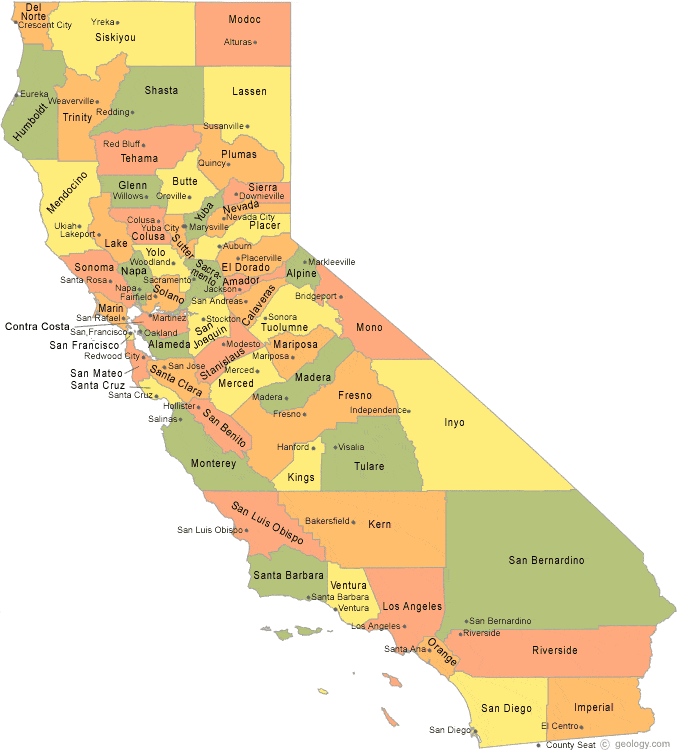
Have you ever wondered how many counties California actually has? You’d be surprised how many people ask the same question. From trivia nights to travel planning, the number 58 keeps popping up, yet that single digit barely scratches the surface.
California’s counties forma patchwork of contrasts: fog-kissed seaside towns, high-elevation wilderness more info zones, fruit-laden interior valleys, and global entertainment capitals. Every county has a chapter in the state’s saga, shaped byimmigration waves, promising new industries, and waves of cultural fusion.
Over the next few pages, we’ll dig intothe timeline that locked the total at 58, the services counties deliver day-to-day, and which ones stand out for size, population, or sheer quirkiness. When we’re done, you’ll own the knowledge—and map your next California adventure with confidence.
County-Making in Early California
On statehood day in 1850, the map contained barely half the jurisdictions we know now. Rapid gold-rush immigration compelled legislators to carve out new counties. Within twenty years, the count had ballooned to over five dozen counties, and that same year the last adjustments were ratified, setting in stone the canonical figure of 58.
Legislative records show that many break-away regions sprang out of a trio of factors:
- Sheer distance turned routine business into week-long trips.
- Revenue battles pitting ranchers against merchants sparked break-ups.
- Ethnic enclaves sought their own seats.
In less than seventy years, the political map hardened. Right now, every effort to create county #59 stalls, prompting analysts to call the era of county making a finished chapter.
Landscape and Climate Diversity Across California Counties
Plot a route from foggy Crescent City to sun-baked Imperial touching Mexico, and you’ll traverse every Köppen zone short of tundra. Pacific-facing districts enjoy Mediterranean precipitation, while great agricultural belts bank on irrigation.
- Mountain counties such as Mono, Mariposa, and Calaveras host ski resorts.
- River-delta territories mix levee farms with wetlands.
- Island counties like Los Angeles oversee ferry routes.
This breadth clarifies the stark fiscal gaps between counties. Climate, after all, shapes crops and careers.
Behind the Scenes at the County Level
Within the state’s tiered system, municipalities handle zoning, but county boards oversee crucial baseline services that hold civilisation together. Life’s paperwork trail—marriage licenses, tax rolls, voter registries—all reside at the county clerk or recorder.
County law-enforcement offices patrol unincorporated land, while trial courts hear civil suits. Social-services bureaus administer vaccination campaigns. Funding debates occur in monthly Board of Supervisors sessions.
Case Study: Tiny Alpine County
Los Angeles County alone employs 100 000+ workers, illustrating how flexible county governance proves. One template doesn’t fit all when budgets span five figures to double-digit billions.
At day’s close, these 58 mini-capitols bridge Sacramento’s big laws and local reality. Knowing their role helps residents demand accountability.
Where the People and Money Are
California houses over 39 M souls, but the headcount clusters unevenly. LA’s single jurisdiction packs nearly 25 %. At the other extreme, tiny Alpine County hovers around a thousand residents.
- Top headcount: County of Los Angeles
- Smallest by residents: County of Alpine
- Biggest footprint: San Bernardino County
- Tightest borders: San Francisco
Money, like people, concentrates and evaporates. Silicon Valley counties report six-figure median incomes, while Central Valley breadbaskets face commodity price swings. This revenue gap informs legislative redistricting every decade.
Knowing which county tops which listis trivia gold: county metrics shape property taxes and commute times.
An Epic 58-County Road Trip
For intrepid travellers, setting foot in each CA county ranks as a top geo-challenge. A popular itinerary kicks off in sunny San Diego, rolls up the Pacific Coast Highway, swings through Big Sur, then zigzags across rice-field flats and orchard grids, before snaking into the Sierra Nevada for old stamp mills.
Three-Day County Clusters
- South-land Loop – Border to wine country; 10 counties in three days.
- Heartland Stretch – Ventura to Sacramento; flat-land express.
- Shasta & Siskiyou Turn – mountain lakes and volcano cones; jaw-dropping vistas.
Finish the circuit in the desert southeast, with quadruple-digit odometer gains. At that point, you can confidently claim you know “how many counties California has”—because your copyright stamps prove it!
Frequently Asked Questions
Below you’ll find concise answers to the most common county-related queries.
How many counties are in California?
Government documents list fifty-eight counties—a number that hasn’t changed since 1907. Regardless of the source—be it Sacramento archives or federal census data: 58 in all.
Which county has the largest population in California?
LA County leads by a wide margin, housing roughly one in four Californians. Decades of immigration, entertainment dominance, and job growth keep the numbers high.
What is the smallest county in California by population?
Alpine County holds that distinction, rarely crossing the 1 200-resident mark. Its remote Sierra setting keeps growth modest, creating tight-knit communities.
Largest county by land size?
Geographic titan San Bernardino County covering a footprint larger than nine U.S. states. Its sheer scale means climate zones shift from alpine snow to Mojave heat within county lines.
Why does California have exactly 58 counties?
Early statehood growth pressures split larger districts into smaller units, wrapping up after Imperial broke from San Diego in the early 20th century. Since then, proposals to add a 59th county have surfaced but never cleared the Legislature.
Could a region break away to become its own county today?
Legally, yes—state law allows it, yet practical barriers loom large. A break-off region must gather local signatures, win a majority vote in each affected county, and secure legislative approval. Hence, California has remained at 58 for generations.
Why are counties important to everyday life?
Behind the scenes, counties keep daily life functioning: foster care, libraries, building permits, and superior courts. Remove counties from the equation, and civil society would struggle to operate.